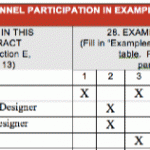
Interview with New York Times Best-Selling Author, Dr. Robert Cialdini Ph.D
If you could ask the foremost expert on influencing human behavior a question, what would it be? And what would that answer be worth to you? How could that answer change your life?
This is the opportunity (and challenge) I was recently graced with when Dr. Robert Cialdini agreed to sit down with me and teach me new ways to ethically influence the decisions of others.
Harvard Business Review calls him, “the foremost expert on effective persuasion.” And Forbes says his latest work, “Extends the science in persuasion in several important ways…” And the full, unabridged interview I’m about to share with you does not disappoint. It may just be the most valuable thing you read all year.
Bob answers my toughest questions on influencing decisions and beating incumbents. He also shares tremendous insights on getting clients to accept your initial price and the powerful concept of “Pre-Suasion” that takes center stage in his new book by that title.
If there’s a theme to Pre-Suasion, it seems to be related to the power of focusing people’s attention. In the book, you make a statement, “what’s focal is causal.” Can you help us understand what you mean by that statement?
I think you are right to identify the central theme of Pre-Suasion as embodying the importance of directing an audience’s attention to a particular concept, feature, or idea of what we have to offer.
That’s for two reasons. One is that, as soon as we pay attention to something, we overvalue related information associated with it that we might receive next. As a consequence, things we are paying attention to seem more important than they were immediately before we were paying attention to them. They also seem more likely to be a cause of what’s going on in our environment.
Typically, we pay attention to the things that are important and the things that are causes in our environment. It only makes sense that we would pay attention to the most significant aspects of what’s going on around us and to pay attention to those things that are causing the events going on around us.
As a consequence, we make the mistake of assuming that if we are paying attention to something, it must warrant that attention because it’s important and causal. We make that error. A communicator can force us into that error by focusing our attention in a concentrated way on a particular concept that’s favorable to his or her case.
What I think I’m hearing is, the causal element is when we are focused on something, we attribute that as being the cause of our actions.
Exactly. When we see something as more important, we tend to see it as more causal. A study was done by an online furniture store that specialized in sofas. To try an experiment, they sent half of their visitors to a landing page that had fluffy soft clouds in the background.
The other half were sent to a site that had pennies in the background. Those who were sent to the site with clouds then rated comfort as more important and more of a causal reason for them to choose a sofa.
Those who were sent to the site with pennies rated cost as more important and more of a causal feature for them to choose a sofa. In the end, those who saw the clouds ultimately preferred to purchase more comfortable furniture. Those who saw the coins preferred to purchase more inexpensive furniture. What they were focused on initially changed what they registered as important and causal for them.
That’s great to know because my wife is always trying to buy furniture and I’ll send her to the pennies site now.
Yes, and you are right to alert her to this because the people in this study didn’t believe that seeing the clouds or the coins had affected them at all.
Let’s talk about another scary thing in your book. Let’s say I’m walking down the street and an attractive woman asks me for directions to Valentine Street. I’m a nice guy. I’m going to give her directions. But then it turns out I’m more likely to confront four men when asked to later by a completely different woman who complains they stole from her. I’m more likely now to go up and start that confrontation or conversation with these guys just because several minutes ago somebody asked me for directions to Valentine Street. It’s like I have less control of my own decisions than I previously thought.
I’ve read your other stuff and I know that I didn’t start out with total control. The question I have is do you think the ultimate conclusion is going to be we don’t really have control over our own decisions?
Well, we can go back to the clouds and coins study and explain what just happened because you were asked for directions to Valentine Street. In the experiment you are talking about, they also asked another group of people for directions to Martin Street.
Martin Street didn’t influence the guys to help another young lady in distress 100 meters down the road. But Valentine Street did because Valentines is a day associated with romance. Romance became prioritized for them versus risk. That is scary. Their attention was moved around by what a communicator did first.
Valentine’s Day is a day associated with romance. Romance became prioritized for them versus risk, just because they had been focused on a romantically-linked holiday a few minutes before. That is scary. Their attention was moved around by what a communicator did first.
This is a natural state of affairs for us. It’s the way we work as a species. My advice to consumers and recipients of messages is not just to pay attention to what the communicator is saying inside his or her message, but what the communicator is saying in the moment before their message. What had the communicator done there? That’s as important a lever to success as what the communicator did inside the communication.
Are our behaviors simply a product of our biology and the mental connections we’ve built up over the years?
They are. Although I don’t know that they are simply that. We also get to reflect back on them and decide whether they are the right thing to do. Just as I suggested, whenever we see ourselves deciding to move in a particular direction because of a message, we should step back and ask, “What happened just before that message was sent to incline me in a direction I may not want to go if I were to think about it in a considered thoughtful way?”
So think about what happened before. Was there something before that could have triggered me to make this decision? When this lady comes to me on the street, I should say, “Well, is there anything before that happened earlier today that may have…”
Right. In fact, “What happened just before the message? What were those clouds doing on the website? What’s the first thing I saw?”
Here’s the next question. In my industry (which is people who design, engineer, and build large construction projects) one of our challenges is unseating incumbents. It’s easier for clients to choose incumbents again because of the consistency principle. These clients also know the incumbent’s staff. They’ve worked together towards goals. So, there is a liking effect going on as well.
The approach I learned from you is, “Armed with this new information, your decision to choose us is consistent with your previous decision to choose the incumbent.” You’ve got to provide some new information. Armed with this new information, their decision to choose us is just the same as it would have been earlier to choose this other firm.
Yes, by saying that it’s consistent with your decision to make the right choice for you at any given time.
Is there any aspect of your recent work that might provide us maybe some additional help to unseat incumbents?
Let me first reflect a little bit on that previous recommendation. I think what’s important in what you were saying is that you want to be sure not to say to a prospective customer, “You know, you were wrong to choose my competitor.” That’s going to produce a backlash.
Nobody wants to be told that they were foolish in the past. What you should say is, “I think what you were deciding at that point in the past was entirely consistent with what made sense then; but things have changed. There’s new research or there’s new information now.” That breaks the commitment and consistency principle. It breaks its hold over us by saying there’s something new now.
Then you can say, “You don’t have to stay with that choice. You can be consistent with the idea of being a good decision maker just as you were in the past.” That’s very similar to what you were saying, Matt.
But what else might we do? Well, one thing that research suggests is that, before people have to make a choice to move in a new direction, we can remind them of their adventurous sides. There was a study where people were asked to try a new product, a new soft drink, and to give their email address so that they could get information to try it. They were handed a flier that described the new product.
If at the top of the flier it said, “Do you consider yourself an adventurous person?” The success rate of getting this email address from potential customers went from 30% to 55%. Just by putting people in mind of their adventurous side before the request was made. That’s one thing that’s possible.
Another is if you are sending people an email…you know how at the bottom of a lot of emails there are adages, sayings, or slogans that people put at the bottom of their message? I always read them.
If we are looking for change, there are certain slogans we should put at the bottom of our email before people click on our attachment that is proposing change for them. For example, I like this quote by L.P. Hartley a British novelist, “The past is a foreign country. They do things differently there.”
Here’s another one. “When you are through changing, you are through,” by Bruce Burton. You can load these things into the information environment before people encounter your request for change. Now because that is focal…because that’s now high in consciousness…it becomes seen as more important and more causal.
If I’m presenting to a big client during a shortlist presentation, I could have one of those sayings as the first slide while we are setting up. It’s just there for them to take in. That’s pretty sly.
Here’s another one that even is less likely to be detected; and it is that people are ready to change at the beginning of a designated period of time.
We all know that people make their resolutions for change at the beginning of the year, New Year’s resolutions. But it also turns out that people are more willing to change at the beginning of the month than at the end of the month. They are even more willing to change at the beginning of the week than at the end of the week. If we have a message for change, send it in the first few days of a month or the first couple of days of a week.
If they are going to schedule you for a presentation for the client, they ask, “Well, do you want to do October 31st or do you want to do November 1st?” You are going to go with November 1st?
Choose November 1st. You can also do it with the beginning of a quarter of business, an economic quarter. Do it at the beginning of that quarter. People are ready to change at the beginning of new periods of time.
That’s crazy. That’s the stuff I’m talking about. It’s mind boggling. Talking again about the shortlist presentations, when presenting for a contract to build a school, firms often highlight all the good things they do for the community. They may even explain how they will incorporate the students into the project so the students benefit.
To me this seems to be kind of an “indirect reciprocation.” Is there such a thing as indirect reciprocation? And if so, to what extent has the academic world studied this concept?
In fact, my research team has studied it. You know how when you go to a hotel maybe 70% of the time somewhere in the room, there’s a sign asking you to reuse your towels and linen? They usually say “Do this for the environment.”
Well, some hotels have started using a strategy that they think incorporates the rule for reciprocation. They say, “If you do this, we will donate a percentage of the savings to an environmental cause in the name of our guests.” We tested that. We actually went to hotels and we used two kinds of signs. The claim that we will do this for you if you first reuse your towels had no significant impact on the willingness of people to actually reuse their towels.
But, we had another sign that said, “We’ve already donated to an environmental cause in the name of our guests, could you hang up your towels to help us cover the cost of that gift that we’ve already given in your name?” Now we’ve got a 29% increase in willingness to hang up their towels.
You have to do this right. The rule for reciprocity says you have to go first. So, if a project manager says “We promise to incorporate some of the students in the project so they can benefit from it. We’ve done it in the past, and we are committed to doing it on this project” that’s a very good idea.
So, that’s a sound strategy from your perspective?
Definitely
Great. Do you know University of Penn’s Adam Grant?
I do.
He performed a study on student call centers soliciting donations from alumni. He found that bringing other students who had benefited from the donations to tell their story to the sales team, improved the team sales numbers. In Pre-Suasion, you tell the story of a management consulting team that achieved greater success by looking at photos of the employees that work with benefit.
It seems to me that there is a connection between these two situations. Maybe each approach could benefit from adding to the other. In your opinion, is there a similar thing going on in these two situations?
Yes. The extent to which we can bring people’s attention to a particular connection that they might have with an audience or with those who will benefit from moving in the direction that we are hoping our message recipients will move…that’s likely to work.
In my new book, what I’ve suggested is that, there is a seventh principle of influence besides the six that I described in my book, Influence. It’s called unity, the extent to which you feel a connection to the others who you are working with or dealing with. That connection, that sense of human connection, does elevate the likelihood that we will say yes to those people.
I have a colleague who a while ago whose help I needed. He’s known for being disagreeable; but he is on the same faculty, the psychology department that I am. I needed some help from him. I needed some data from a study he had done. I called him because I had a deadline for filing the report the next day. He said, “Bob, I’m not going to be able to help you with this. Just because you are a poor time manager and you’ve got a deadline tomorrow doesn’t mean I should drop everything I’m doing. That’s your responsibility.”
I had read some research earlier that made me change what I said in response to his denial of assistance. I would have said, “Tom, I really need this. I would really appreciate it if you could help me.”
Instead I said, “Tom, we’ve been in the same psychology department now for 12 years, I really need this. I would really appreciate it if you could help me.”
I had the information that afternoon. I just pointed to a connection, an existing connection.
It just wasn’t top of consciousness for him until I brought it there. That human connection made all the difference.
You didn’t have the liking to rely on. You had to pull out number seven for this one it sounds like.
Right, exactly.
This is a quick one. Which publications do you find most helpful in your area of expertise?
There are two magazines I like that bring me up to date on new relevant research that I might not otherwise see. One is Scientific American Mind and the other is Psychology Today. Both also have blogs written by researchers that I find informative.
There is a marketing guru named Jay Abraham who promotes this idea that if you truly believe your client will benefit most from your service and going with another choice will do their business harm, you have a moral obligation to do everything in your power to help your client make the right decision.
I know ethics is very important to you. Do you agree with this concept? If so, where would you draw the line especially considering this concept of focusing people’s attention?
I think this, the ethics of these approaches, is an important question. I guess I would agree with Jay in a large respect that if you truly believe that this is the best thing customers can do, then it’s ethically appropriate to give them evidence of how they can improve their outcomes.
But there is a complication. Sometimes we can make ourselves believe that what we have is the best for our customers out of a bias we have toward our products or ideas. It’s tough to de-bias ourselves when we are associated with a particular product or idea and to take a truly objective perspective.
What I say is something a little different, not incompatible with what Jay is saying. What I’m saying is, among the various features of what you have to offer, which is the strongest? Which one is the best argument or the most superior feature of your case? Then raise that to consciousness first.
Even before you send people in that direction, highlight the strength of your case. That way people will be sure to have access to the best feature of what you are offering. Then they can decide compared to other possibilities whether this is the feature that will take them down the right road.
You cover a lot in Pre-suasion. It’s a very different book than Influence. There are even portions of the book that might be considered self-help or productivity, like the concept of “If-When-Then.” Were there any concepts you considered adding to the book, but didn’t make the final cut? If so, what can you tell us about them?
There is one that I really like and I couldn’t quite find the place for it. It has to do with how you present a budget for your project. You don’t want the people on the other side to push back against your budget and demand a reduction that will make it difficult for you to get a profit if you take the business. You also don’t want to alienate them by not being willing to work with them on price.
The strategy is to get them to accept that first offer that you make. Let’s say you’ve got a… what would be a standard budget for one of the big projects that your audience would look at?
It could be a quarter of a million dollars.
All right, let’s say it’s $250,000. That’s the budget. You’ve done your homework. You figured in every element and looked at every angle in what it would cost you to do this, and it comes out to $250,200. What you’d typically do is you round it off to $250,000. That’s a mistake.
Specificity breeds believability, right?
Exactly. A precise number tells people you’ve done your homework, you’ve figured it out exactly. The research shows it prevents pushback because it’s not seen as some pie in the sky number you just pulled out of the air. It’s seen as something that is based on your hard thinking.
Do you remember in high school, your math and science teachers would tell you, “On the exam, I want you to show your work, don’t just give me the answer. Show me how you got there; show your work.” That’s what I’m saying. A precise number does that. It shows people that you’ve done your work. And, if you have done your work, you don’t want to fumble that fact away. You want that to be an accurate perception of who you are.
That’s very helpful. Just let me ask this one last question. I think it’s a given that anybody involved in marketing or affected by marketing should read your new book, Pre-suasion. Assuming they’ve never read anything by you and they only had time to read two books this year…what other book written or co-written by you should they buy?
Clearly it should be Influence: The Psychology of Persuasion. That’s the book that sets out the basic features of a request that increase the likelihood that people will say yes to it. Then there is another one that we’ve written along with two of my co-authors, Steve Martin and Noah Goldstein, called The Small Big. This one answers the question, “What are the smallest changes you can make to what you say that will produce the greatest increase in your success?” So, those would be the two.
I love both those books, so I definitely agree with you.
I’m glad to hear it.





Matt, as always, this incredibly valuable! As a former social worker, I always research each person on a selection committee to craft presentations that will resonate with them. For instance, you’d generally think a K-12 client would resonate with a warm-and-fuzzy, collaborative approach to project management. But at one district, I discovered that the superintendent was a former military officer so we presented our team in a “command-and-control” manner with a clear hierarchy of responsibilities. It was a winner!
I’m definitely going to see how I can fold this into our strategy. Thank you again for being such an amazing resource to A/E/C marketers!